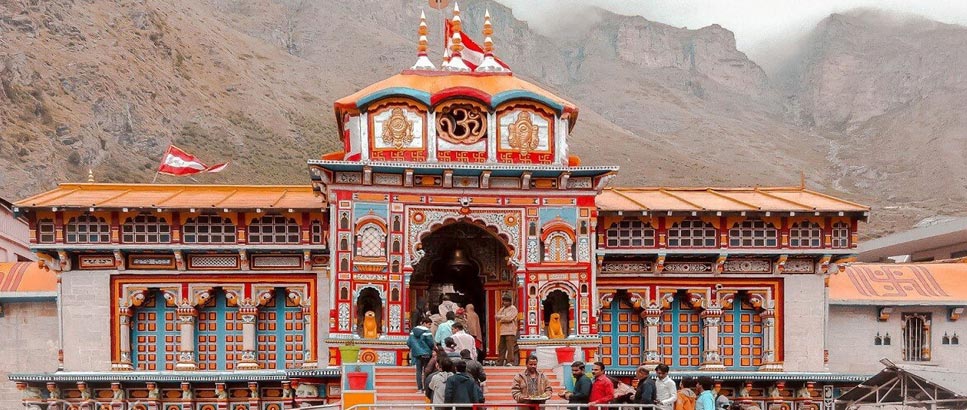
Historical & Mythological Backdrops of Char Dham in the Land of Gods
The state of Uttarakhand, devotedly known to be ‘Devbhumi’ is the abode of the Chardham Yatra, which holds high spiritual significance. The four holy routes of Chardham destines to Yamunotri, Gangotri, Kedarnath and Badrinath on the Garhwal Hills of Uttarakhand. To know about these spiritual journeys to the four abodes, it is important to know about their history of origin. The exact origin of the onset of the Char Dham Yatra is unknown, but pilgrims have been mapping these routes for centuries for spiritual attainment.
According to Hindu Mythologies, Adi Shankaracharya, the Indian Vedic scholar and teacher, along with his twelve disciples began the spiritual journey to the four shrines in the 8th Century for the first time. On his way, the saint had composed two hymns known as ‘Chardham Mahamantras’. All four Dhams radiate mysticism and hold their own legendary stories behind their origin. The sacred portals of Dev Bhumi encompassed strenuous expeditions on foot through uneven paths in the hilly areas till the 1950s. After the Indi-China War in 1962, the Government of India has indulged in massive efforts in strengthening the infrastructure to smoothen the journey of the pilgrims, especially in the border regions. With the joint venture of the Central Government and Uttarakhand State Government, there is better connectivity of transportation and roads to the nearest point of the shrines, the construction of multiple Hotels in Chardham, helicopter services and several other facilities have facilitated the journey of the devout Hindus.
Mythological Expositions of the Char Dham
Yamunotri - The Yamunotri Temple is the first among the Char Dham and is dedicated to Goddess Yamuna. The goddess is worshipped in the form of a black marble idol. Pilgrims trek to Yamunotri for 7 from Janki Chatti to pay their oblations to the goddess. Reaching Yamunotri, it offers views of the Bandarpoonch and Kalind Parbat mountains.
History-
1. The sage Asit Muni in his young days meditated and bathed in the bank of River Yamuna. However, with the aging years, he was unable to reach the river for his bath. Impressed with his pure devotion, the Yamuna River changed its course to flow near Asit Muni’s ashram to provide him ease in performing his daily rituals.
2. The temple was first built by the Ruler of Tehri, Naresh Sudarshan Shah in 1850. And in the 19th century AD, it was rebuilt by Maharaja Gularia from Jaipur after the temple was immensely affected by an earthquake.
Gangotri - In the Uttarkashi district of Uttarakhand, Gangotri is settled on the bank of River Bhagirathi. The source of origin of Gangotri is the Gaumukh glacier, which is an upward trek from the shrine of about 18 km. the River Ganga originates from Gaumukh and is named Bhagirathi.
History-
1. Goddess Ganga descends on earth in the river form at Gangotri, right from the coils of Lord Shiva’s matted hairs. It was King Bhagirath, whose unprecedented meditation for 1000 years impressed Goddess Ganga, the Daughter of Heaven appeared before him to purify the ashes and provide salvation to his ancestors.
2. Amar Singh Thapa, a Nepalese general is believed to have constructed the present shrine of the Gangotri Dham.
Kedarnath - Kedarnath Dham is the most popular among the Char Dham and is situated in the Rudraprayag district of Uttarakhand. The Kedarnath shrine is the abode of Lord Shiva and the trek to Kedarnath Dham starts from Gauri Kund which is the base camp.
History-
1. Two forms of Lord Vishnu Nar and Narayana performed deep meditation in devotion to Lord Shiva. Pleased by their unparalleled penance, Lord Shiva agreed to stay permanently in the Kedarnath Temple in the form of a Jyotirlinga.
2. The Pandava brothers after defeating and killing their Kaurava brothers in Mahabharatha went to Kedarnath to wash away their sins and pray to seek forgiveness from Lord Shiva. Lord Shiva disguised into a hum back bull and tried to escape the Pandavas. However, he couldn’t be successful. The temple is said to be erected on the spot where Lord Shiva disappeared into the ground.
3. The priests of Kedarnath Temple, known as purohit, are worshipping the Shiva linga since the mythological ages and are believed to be the descendants of sages.
Badrinath - The Badrinath Temple is part of both the Char Dham and Chota Char Dham Yatra. The shrine is dedicated to Lord Vishnu and is worshipped in the form of Badrinarayan. One of the temples of 108 Divya Deshams of Lord Vishnu the idol at Badrinath temple is made of black granite stones.
History-
1. According to the Vedic Puranas, Shri Adi Shankaracharya discovered the Badrinath deity from the Alaknanda River and established the Badrinath Temple as a pilgrimage site. Till the 8th century, the temple was believed to be a Buddhist site before Adi Shankaracharya re-established it.
2. Lord Shiva and Lord Vishnu wanted to meditate at the spot of Badrinath at the same time. Lord Vishnu then took a disguise of a baby boy and started crying like a kid on the rocks. Goddess Parvati attempted to console the crying baby but could not succeed. Therefore, both Lord Shiva and Goddess Parvati left the spot to find a new place for meditation.
3. When Lord Vishnu was meditating for several years, Goddess Lakshmi took the form of a Badri tree to safeguard her husband from severe cold. Highly overwhelmed with his wife’s devotion, Lord Vishnu set up the Badrika Ashram, which later transformed into Badrinath.